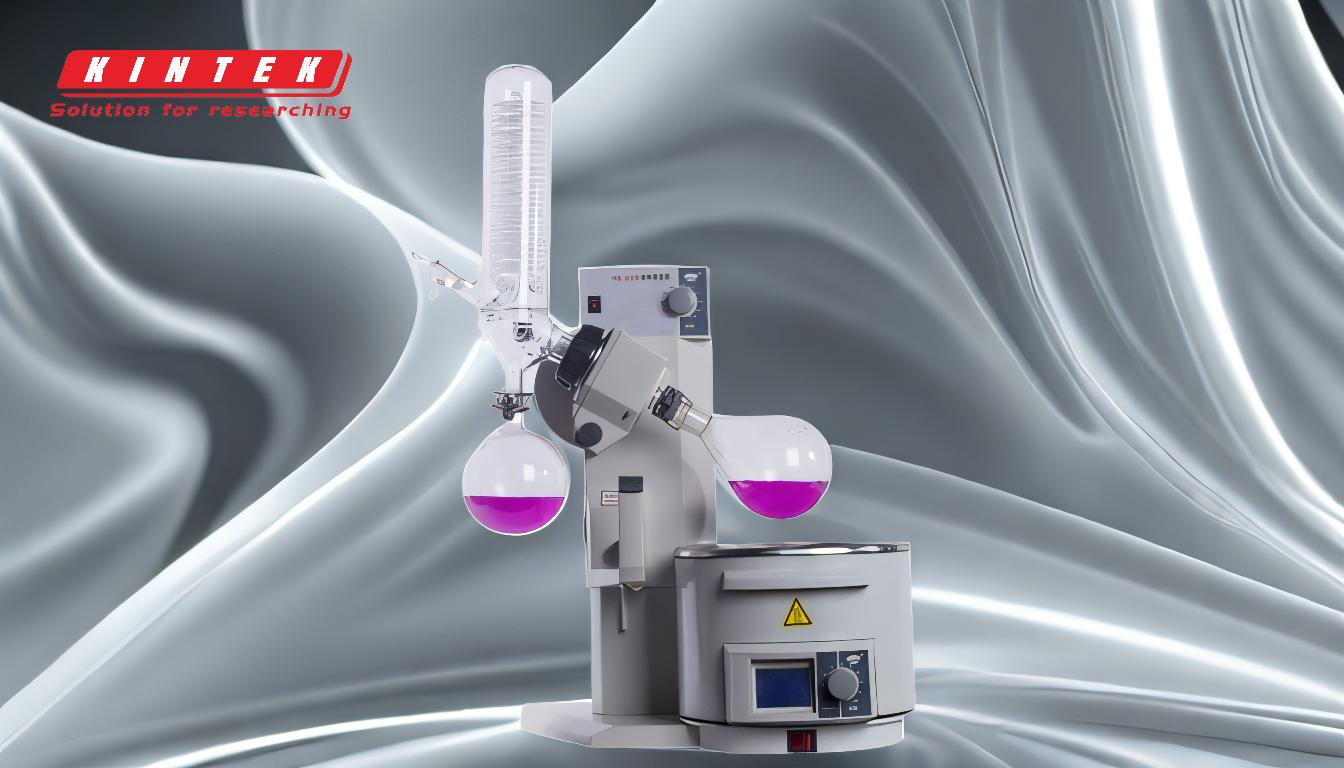A rotary evaporator, or rotovap, is a crucial piece of equipment in laboratories, primarily used for the efficient and gentle removal of solvents from solutions. It is particularly useful for isolating desired compounds after processes like column chromatography and separatory-funnel extractions. The rotovap operates at lower temperatures, reducing the risk of thermal degradation and making it faster and more energy-efficient than traditional boiling methods. It is especially effective for removing low-boiling solvents and is widely used in organic and natural laboratories due to its ability to quickly and sensitively remove solvents under controlled conditions.
Key Points Explained:

-
Solvent Removal Efficiency:
- Purpose: The primary function of a rotovap is to remove solvents from a solution. This is essential for isolating desired compounds after chemical processes.
- Mechanism: The rotovap uses evaporation to separate solvents from the mixture. The solution is placed in a rotating flask, which increases the surface area for evaporation, making the process more efficient.
- Applications: It is particularly useful after processes like column chromatography and separatory-funnel extractions, where solvents need to be removed to isolate the target compounds.
-
Gentle and Controlled Conditions:
- Temperature Control: The rotovap operates at lower temperatures compared to traditional boiling methods. This is crucial for heat-sensitive compounds that may degrade at higher temperatures.
- Pressure Control: The system can be operated under reduced pressure, which lowers the boiling point of the solvent, allowing for evaporation at lower temperatures.
- Benefits: This gentle approach minimizes the risk of thermal degradation, preserving the integrity of the desired compounds.
-
Speed and Energy Efficiency:
- Faster Process: The rotovap is faster than traditional methods of solvent removal. The rotation of the flask increases the surface area, speeding up the evaporation process.
- Energy Efficiency: It is more energy-efficient than boiling methods, as it requires less heat to achieve the same result. This makes it a cost-effective option for laboratories.
-
Effective for Low-Boiling Solvents:
- Specialization: The rotovap is especially effective for removing low-boiling solvents. These solvents evaporate quickly under the controlled conditions provided by the rotovap.
- Applications: This makes it ideal for use in organic and natural laboratories, where low-boiling solvents are commonly used.
-
Versatility in Laboratory Settings:
- Wide Usage: The rotovap is widely used in various types of laboratories, including chemical, organic, and natural laboratories.
- Diverse Applications: It is used for concentrating samples, isolating compounds, and preparing samples for further analysis. Its versatility makes it an indispensable tool in many laboratory workflows.
-
Distillation Process:
- Separation of Components: The rotovap can also be used for distillation, separating a mixture into its components based on their respective volatilities.
- Evaporation and Condensation: The process involves evaporation of the solvent, followed by condensation, allowing for the collection of the solvent in a separate container.
In summary, the rotovap is an essential tool in laboratories for the efficient, gentle, and controlled removal of solvents. Its ability to operate at lower temperatures, combined with its speed and energy efficiency, makes it a preferred method for isolating and concentrating compounds in various scientific applications.
Summary Table:
| Key Feature | Description |
|---|---|
| Solvent Removal Efficiency | Quickly removes solvents, ideal for isolating compounds after chemical processes. |
| Gentle Conditions | Operates at lower temperatures, reducing thermal degradation risks. |
| Speed & Energy Efficiency | Faster and more energy-efficient than traditional boiling methods. |
| Low-Boiling Solvent Focus | Specializes in removing low-boiling solvents effectively. |
| Versatility | Widely used in organic, natural, and chemical labs for diverse applications. |
| Distillation Capability | Separates mixtures into components via evaporation and condensation. |
Upgrade your lab's efficiency with a rotary evaporator—contact us today to learn more!













